Importing data from cloud drive
Analytics Plus allows you to import data from CSV, Excel (XLS and XLSX), JSON, HTML and zipped files stored on various Cloud Drives/Storages such as Google Drive, Dropbox, Box and OneDrive, for advanced reporting and analysis. You can also schedule periodical import from your cloud drive.
This section explains how to import data from cloud drives into Analytics Plus.
- What are the cloud storage services from which I can import data into Analytics Plus?
- How do I import data from Google Drive into Analytics Plus?
- How do I import data from Dropbox file into Analytics Plus?
- How do I import data from Box into Analytics Plus?
- How do I import data from OneDrive into Analytics Plus?
- How do I import data from SharePoint into Analytics Plus?
- What are the various formats in which files can be imported into Analytics Plus?
- Is it possible to import data into an existing table?
- Can I import large files into Analytics Plus?
- How do I set a custom date format?
- Is it possible to map a column from the source file to a column in an Analytics Plus table while importing?
- Can I retain the data source's relational data modeling?
- How do I set On Import Error options?
- Why do I see Warning Details in the Import Summary?
- Can I schedule data import?
1. What are the cloud storage services from which I can import data into Analytics Plus?
Analytics Plus allows you to import data stored on the following cloud drives:
- Google Drive
- Dropbox
- Box
- Microsoft OneDrive
- SharePoint
2. How do I import data from Google Drive into Analytics Plus?
3. How do I import data from Dropbox into Analytics Plus?
4. How do I import data from Box into Analytics Plus?
5. How do I import data from OneDrive into Analytics Plus?
6. How do I import data from SharePoint into Analytics Plus?
7. What are the various formats in which files can be imported into Analytics Plus?
You can import data into Analytics Plus in the following formats:
- Comma Separated Value (CSV)
- Excel
- Ms Access Database files
- HTML Content
- JSON
- XML
- Statistical files
- OData Feed
8. Is it possible to import data into an existing table in Analytics Plus?
Data can be imported into existing tables in Analytics Plus in any of the applicable file formats, from the supported data locations.
Follow the steps below to import data into existing tables.
Open the table into which you wish to import additional data.
Click the Import Data button on the top right corner, and select the Import Data into this Table option.
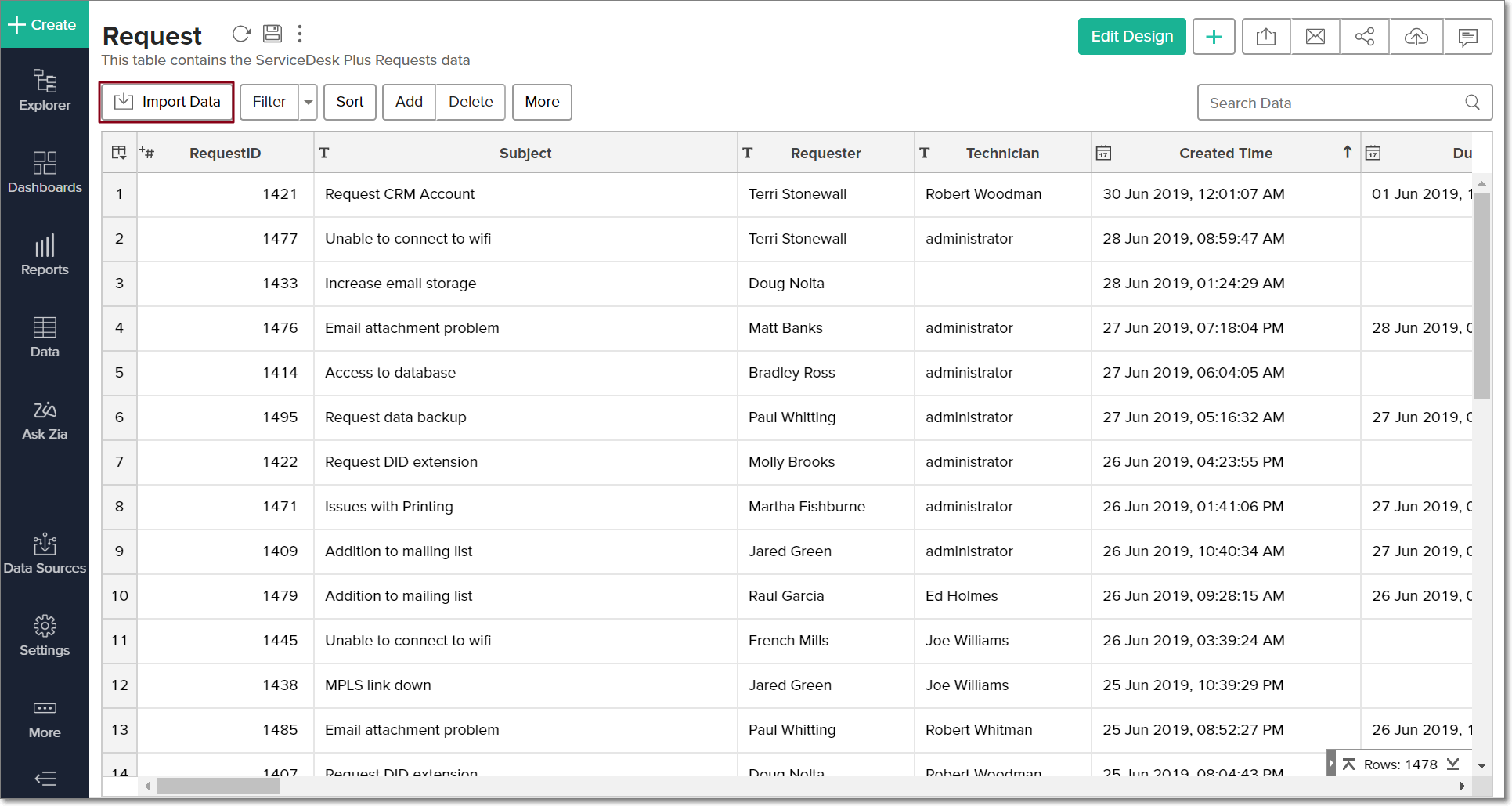
In the Import Your Data page that appears, select the required tile to import data from local files, web URLs or cloud drives.
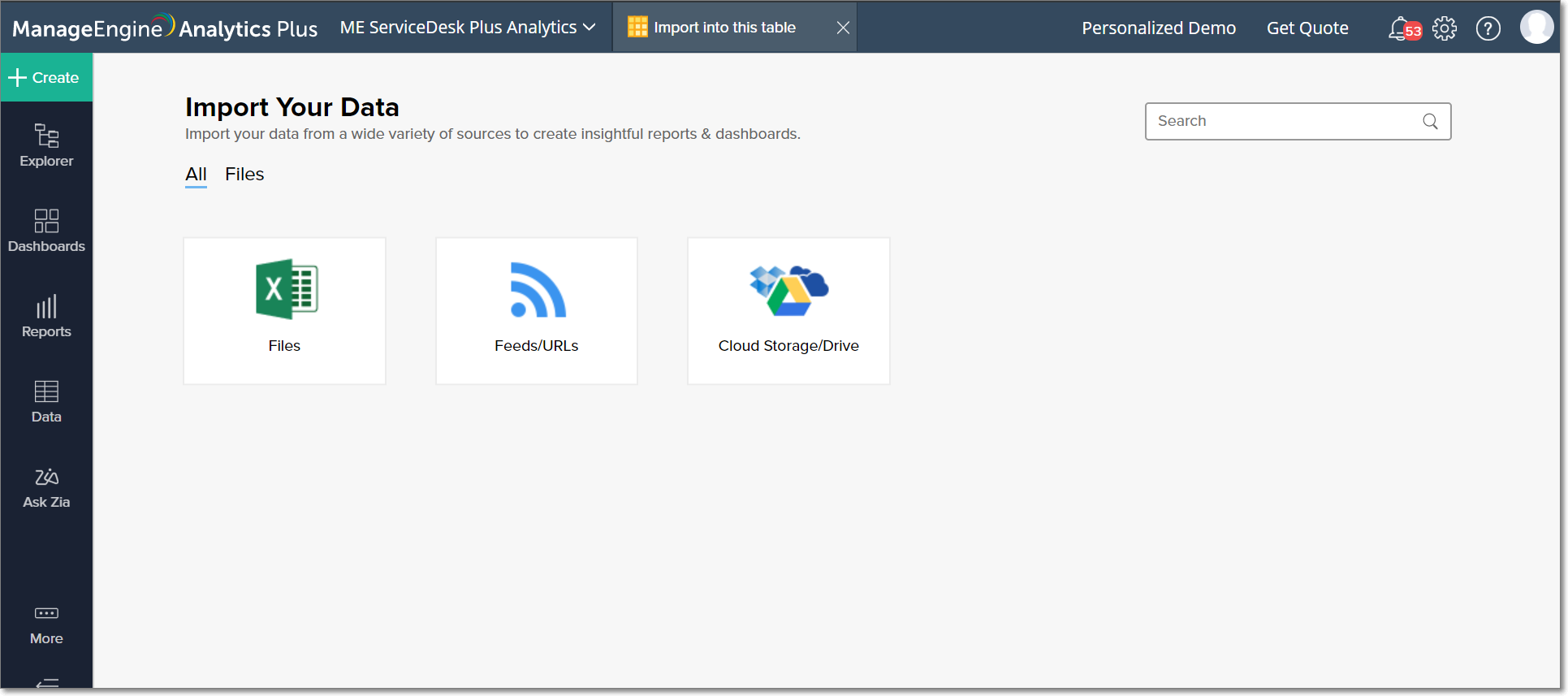
In the page that appears, choose the appropriate option from the How do you to Import? drop down. The following options are available:
Add records at the end: Use this option to append imported records to the end of the table.
Delete existing records and add: Use this option to delete all the records in the table and add the new records into the table.
Add records and replace if already exists: Use this option to update existing records with the new values and append new records to the end of the table.
Add records, replace existing and delete missing record: This option allows you to update the existing records with new values, append new records to the end of the table and delete the records in the table that are not present in the file that is being imported.
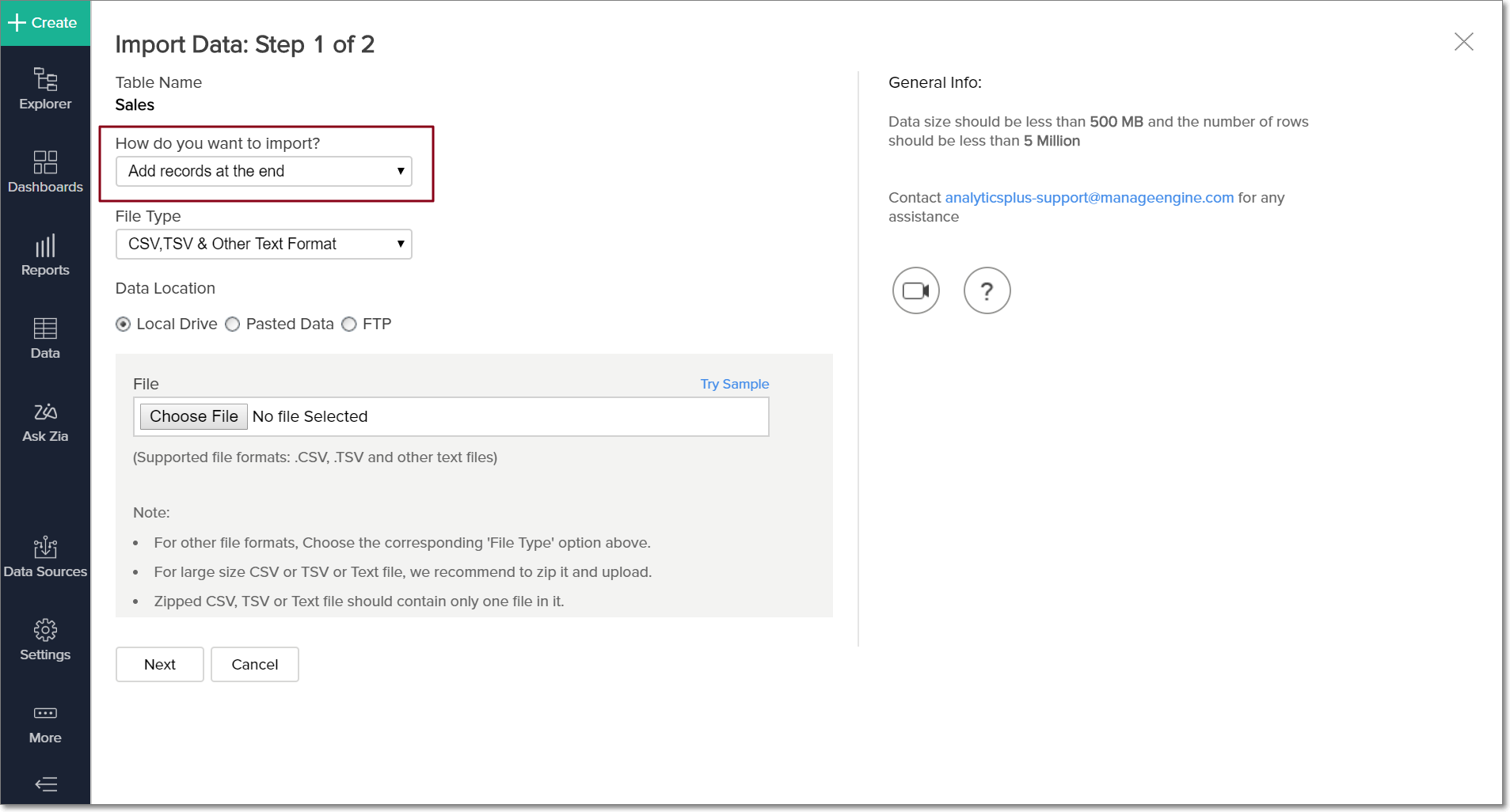
Note: When replacing existing records in Analytics Plus, select the columns in the source file that are to be matched to the existing ones in Analytics Plus. The values in these columns will be used as the key to match the existing records in the table to the new records being imported. Thus, the columns should be selected such that they uniquely identify each record in the table. If unique records are not identified, all records will be appended to the end of the table.
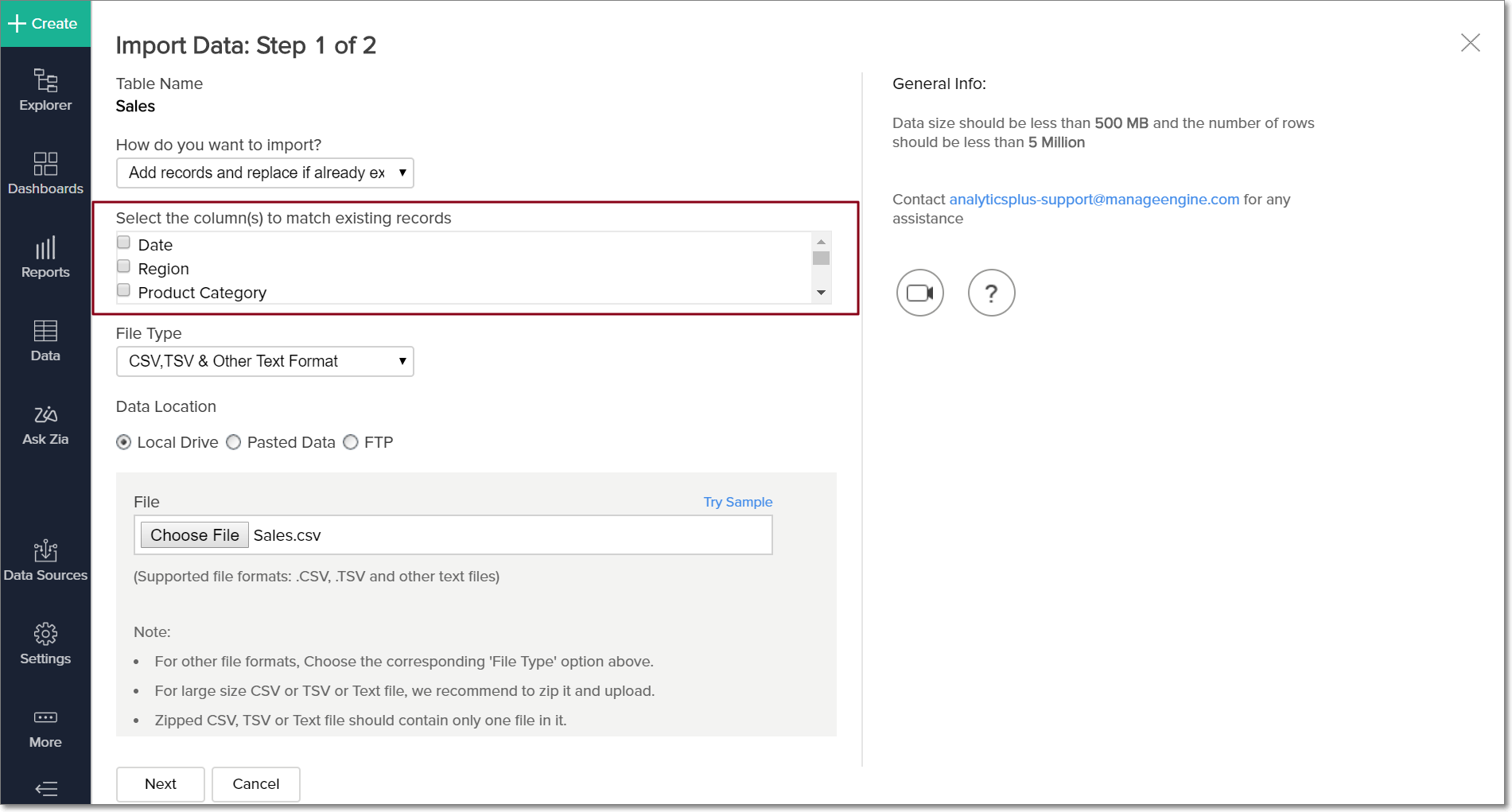
Choose the required file type and data location, select the source file, and click Next to proceed with the import process as usual.
9. Can I import large files into Analytics Plus?
Analytics Plus has the following restrictions on data import:
You cannot import more than 5 million rows into Analytics Plus using the Import wizard.
Files whose sizes exceed 500 MB should be compressed and imported into Analytics Plus.
To can import files larger than 500MB or those that contain more than 5 million rows, use the Analytics Plus Agent. It is a packaged downloadable tool that directly accesses your database, queries the required data and uploads it to Analytics Plus. Scheduled data imports can also be set up. To learn more, refer the Analytics Plus Agent help document.
10. How do I set a custom date format?
By default, Analytics Plus identifies the date format of the date columns in the data being imported. If the default format is incorrect, you can easily modify the same while importing data into Analytics Plus.
There are two ways to set a custom date format for your date columns.
Select the required date format from the Format of Date Column (s) drop down. This option will apply the selected date format to all date columns in the data being imported.
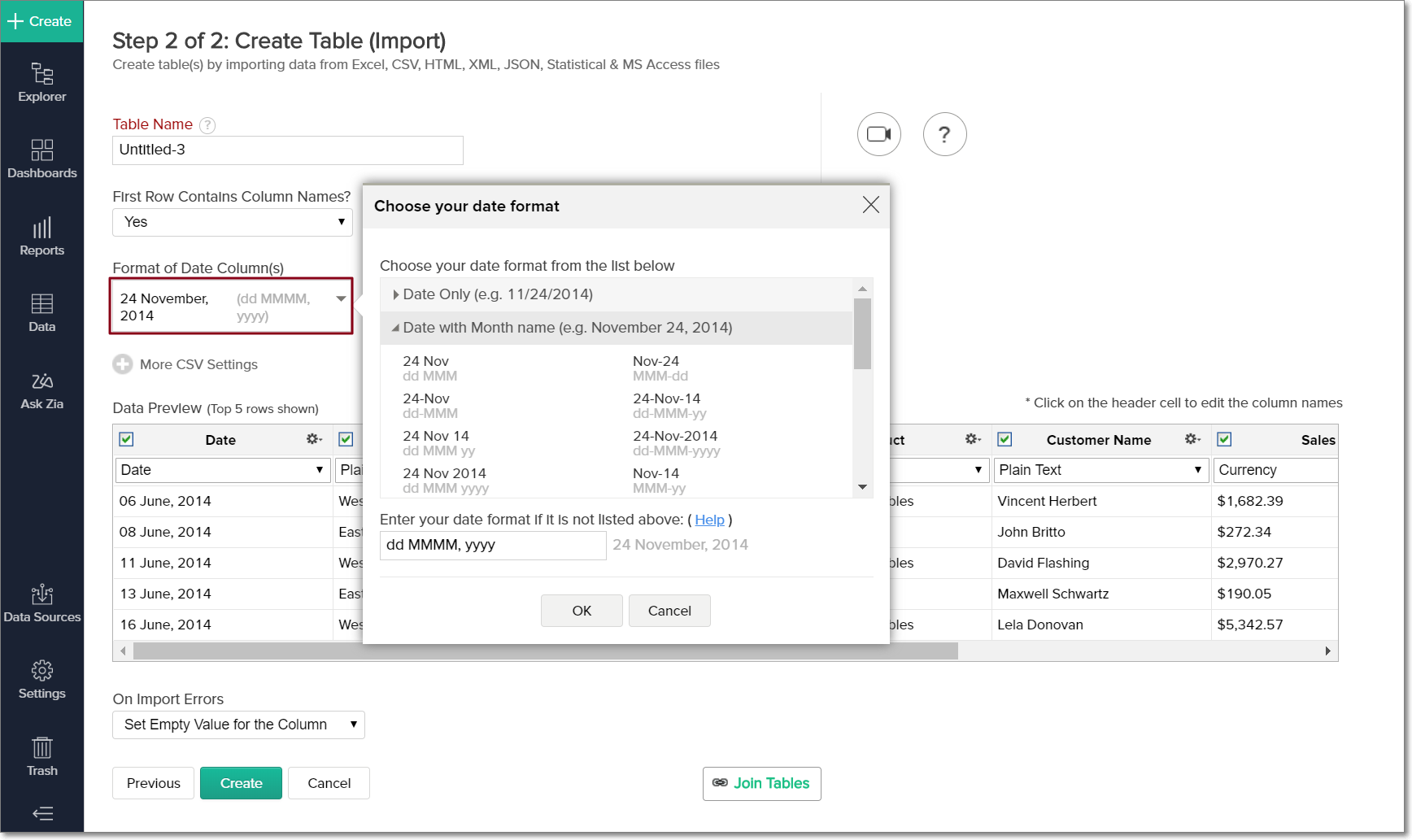
You can also set different date formats for each date column in your data. To do this, click the Settings icon in the preview column header, select the Change Date Format option and set the required date format.
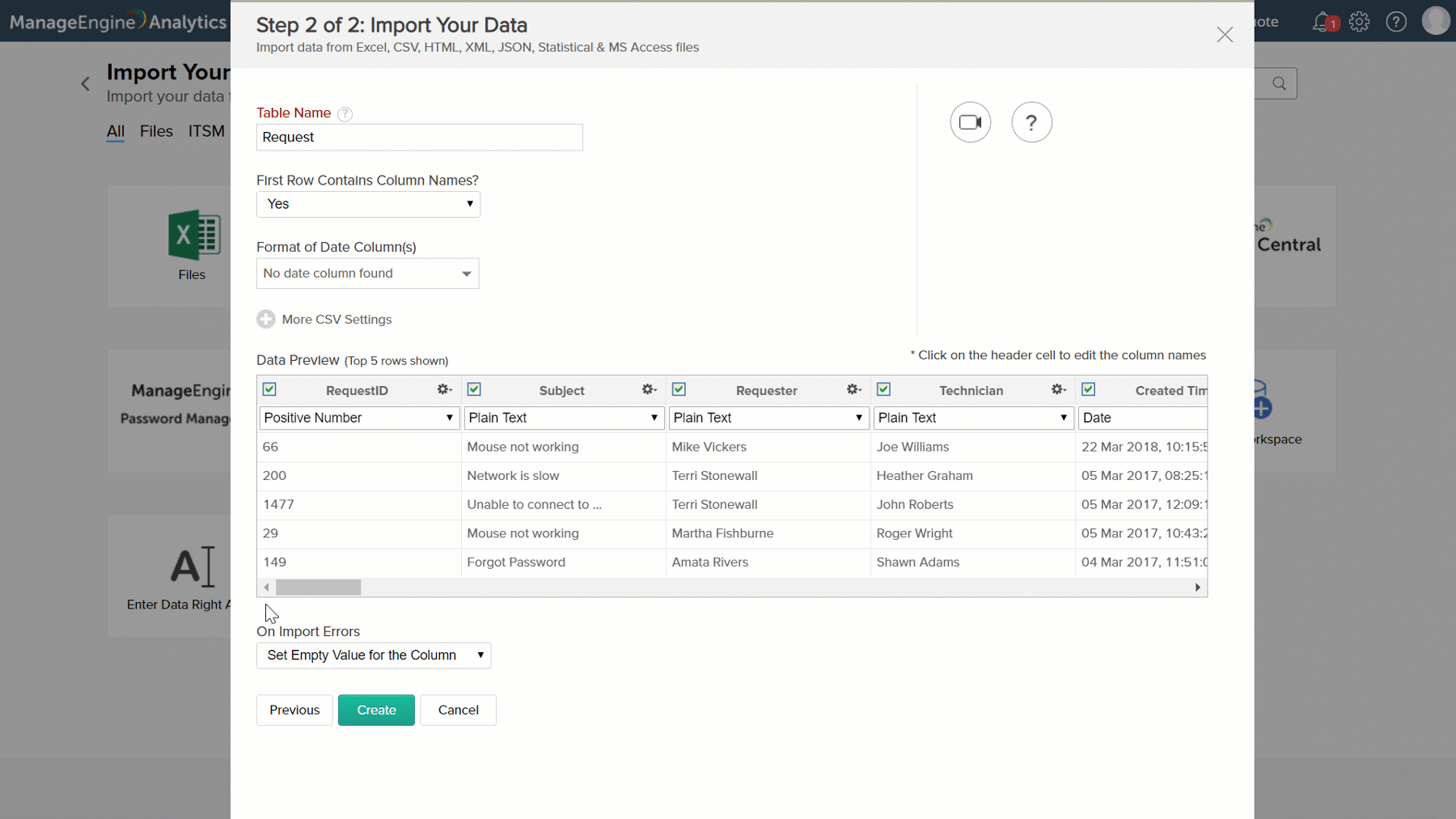
Refer the Constructing a Custom Date format document to know more.
11. Is it possible to map a column from the source file to a column in an Analytics Plus table while importing data?
While importing data into an existing table in Analytics Plus, you can map a column from the imported file to a specific column in the Analytics Plus table. In the Data Preview section of the Import wizard, use the drop down in the column header to choose the required column. You can either select the column the data needs to be mapped to, or specify that it is a new column.
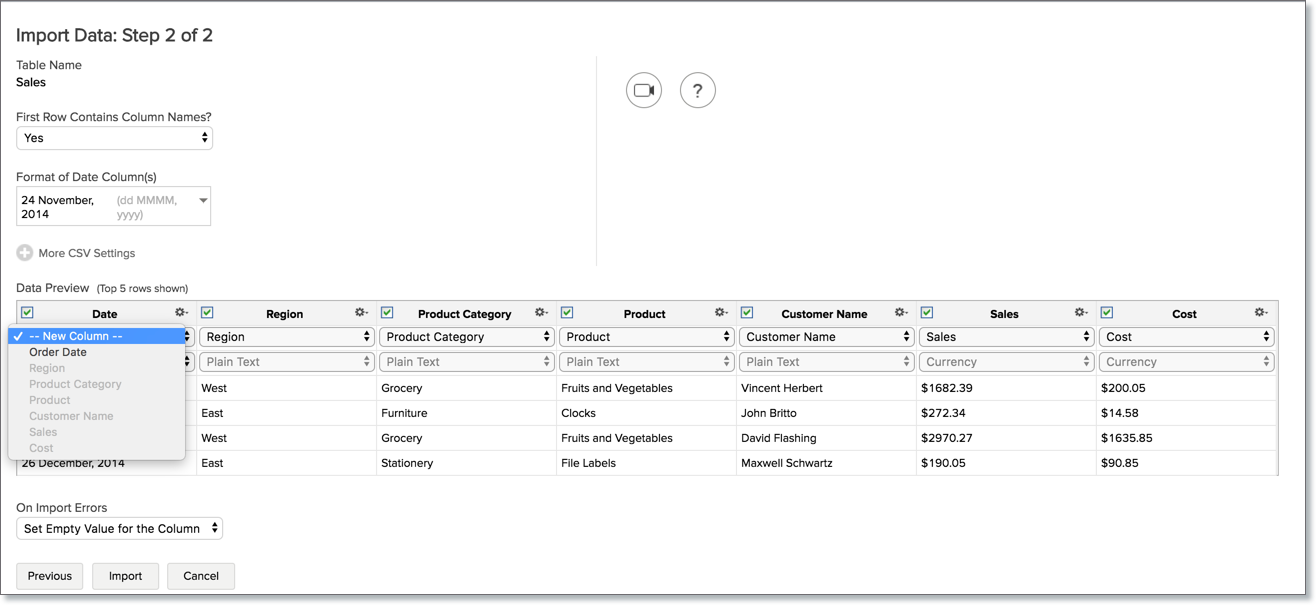
12. Can I retain the data source's relational data modeling?
While you cannot retain your source's relational data modeling, Analytics Plus allows you to auto join tables during data import. While importing data into an existing table, Analytics Plus auto identifies similar columns and provides suggestions for lookup.
The following presentation explains how this works.
13. How do I set On Import Error options?
The On Import Errors drop down in the Import wizard allows you to specify how import errors are to be handled in Analytics Plus.
The following are the available options:
Set Empty Value for the Column: This option sets an empty value to columns that had problems while importing.
Skip Corresponding Rows: This option skips the rows in which an error occurred during data import.
Don't Import the data: If any errors occur during data import, this option allows you to abort the import process.
In case any error occurs during import, the details of the same would be shown in the Import Summary dialog. Refer the next question to know more.
14. Why do I see Warning Details in the Import Summary?
Specifying a wrong data type for your column will generate errors on import. Analytics Plus will handle such errors per the specified On Import Errors option and display details of the same in the Import Summary dialog.
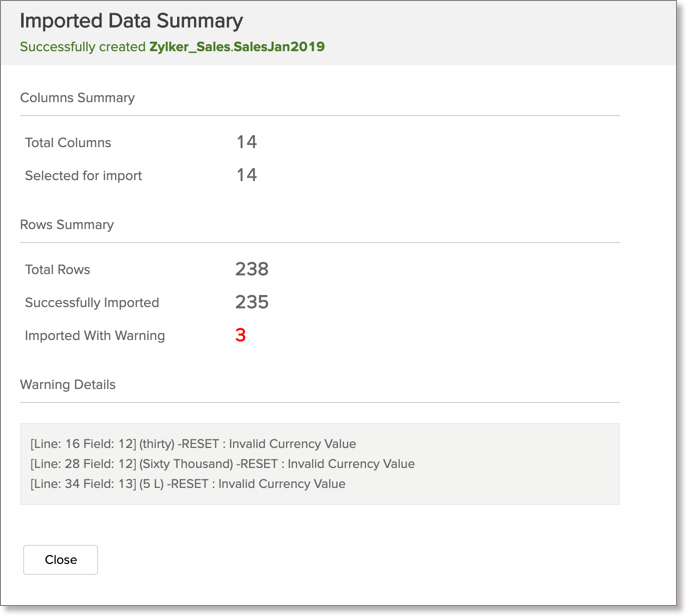
15. Can I schedule data import?
Analytics Plus allows you to schedule the import of data from FTP servers and web URLs.
Note: To schedule data import, it is mandatory that the data has a column header.